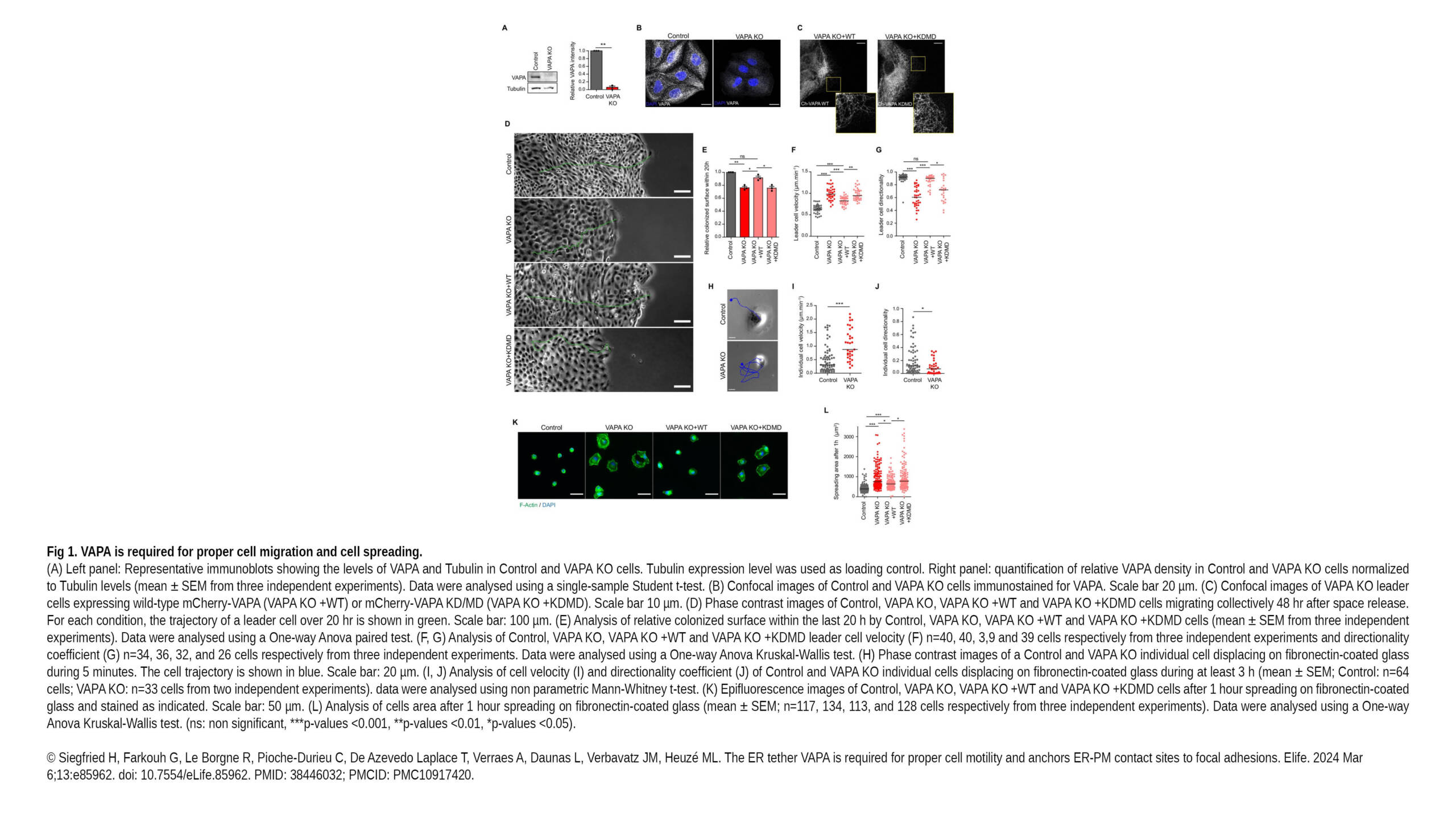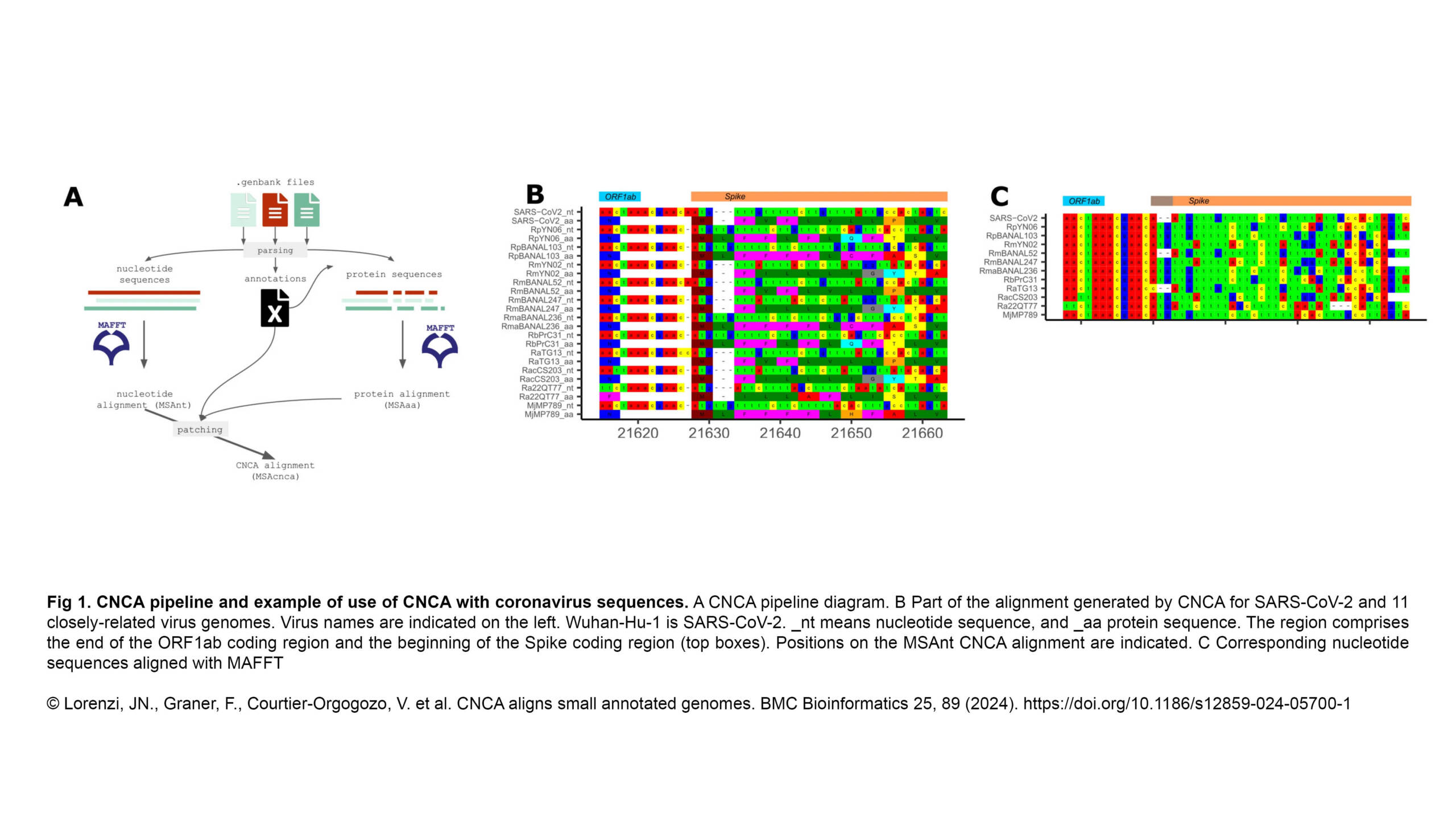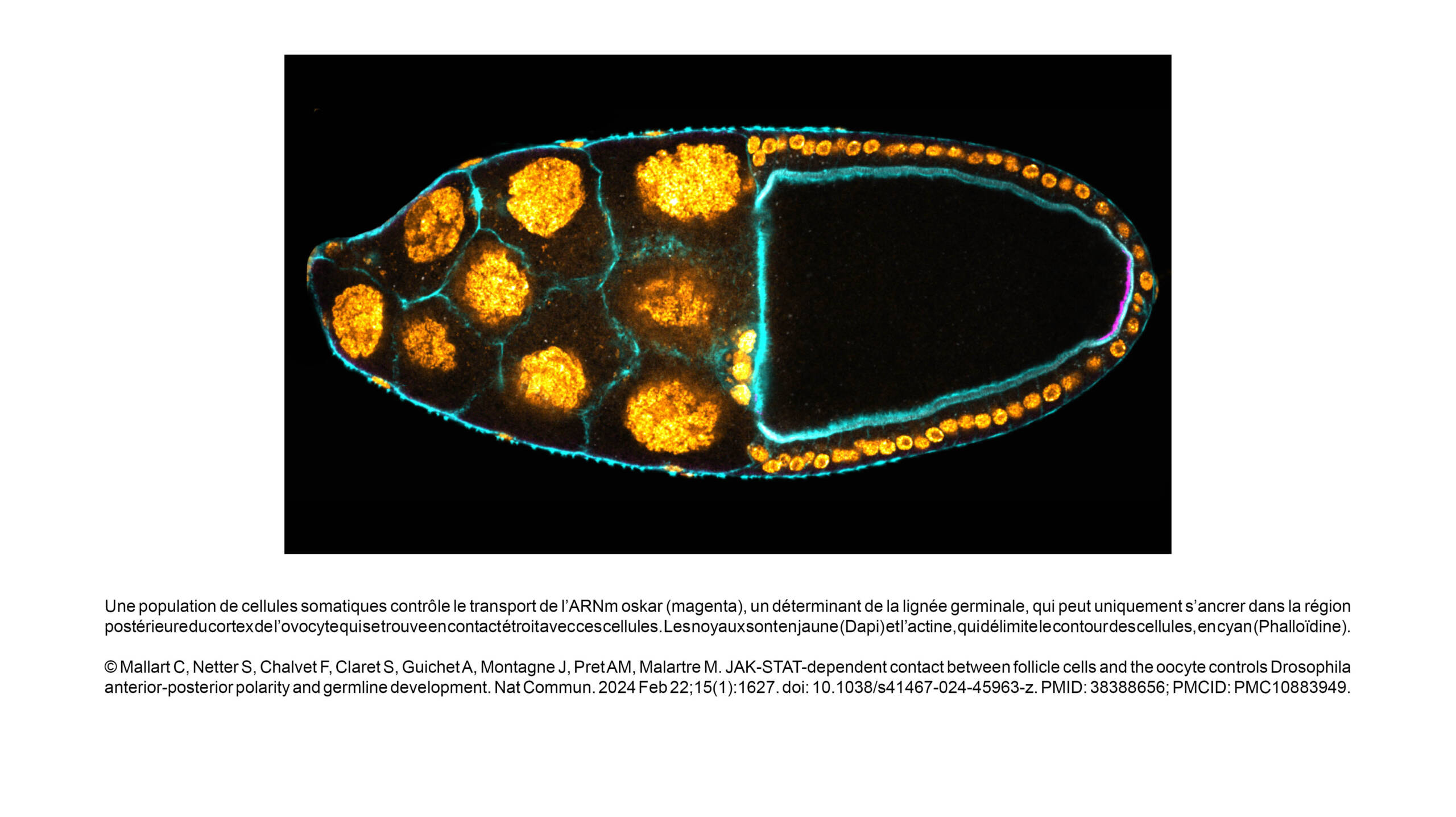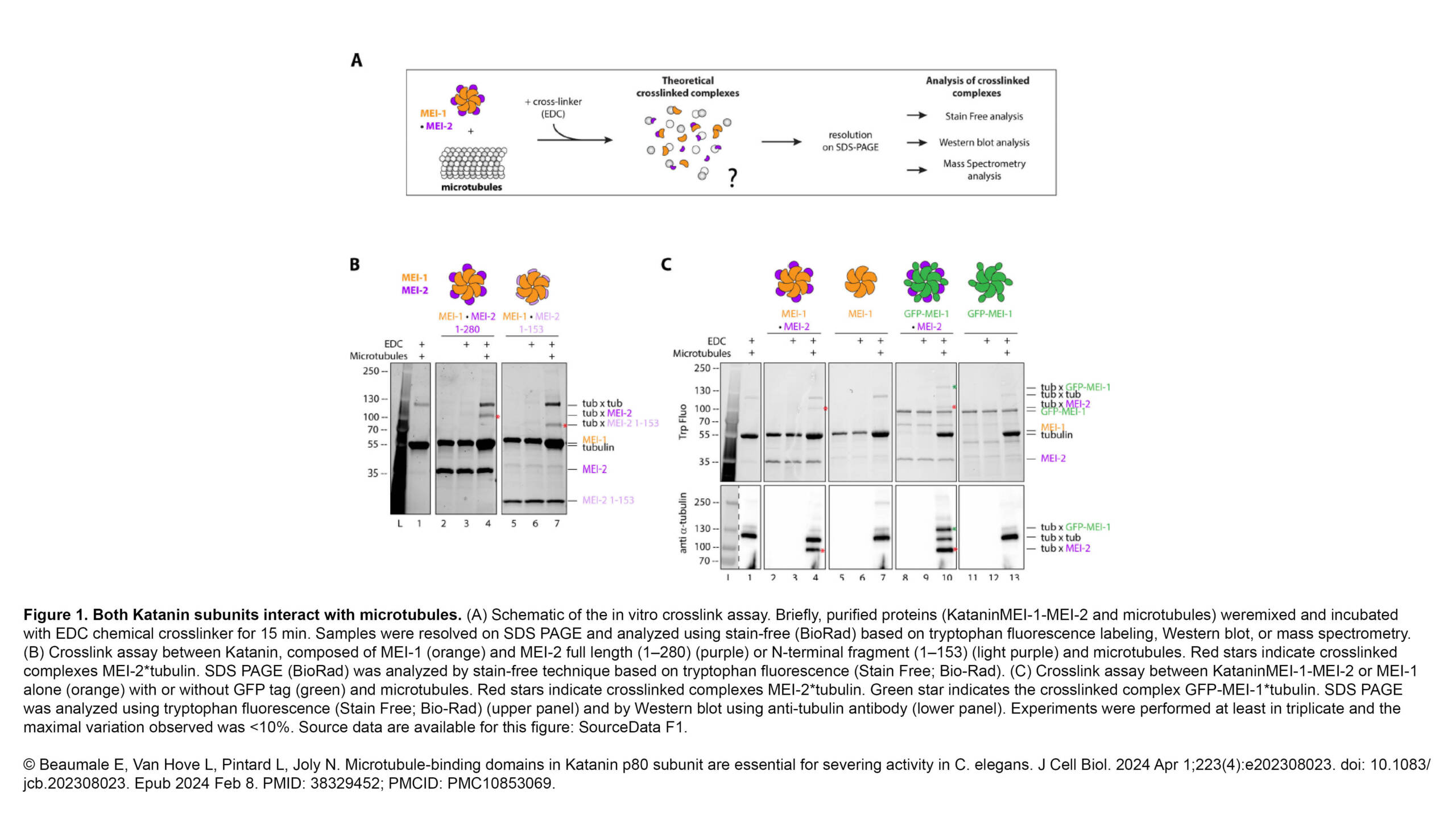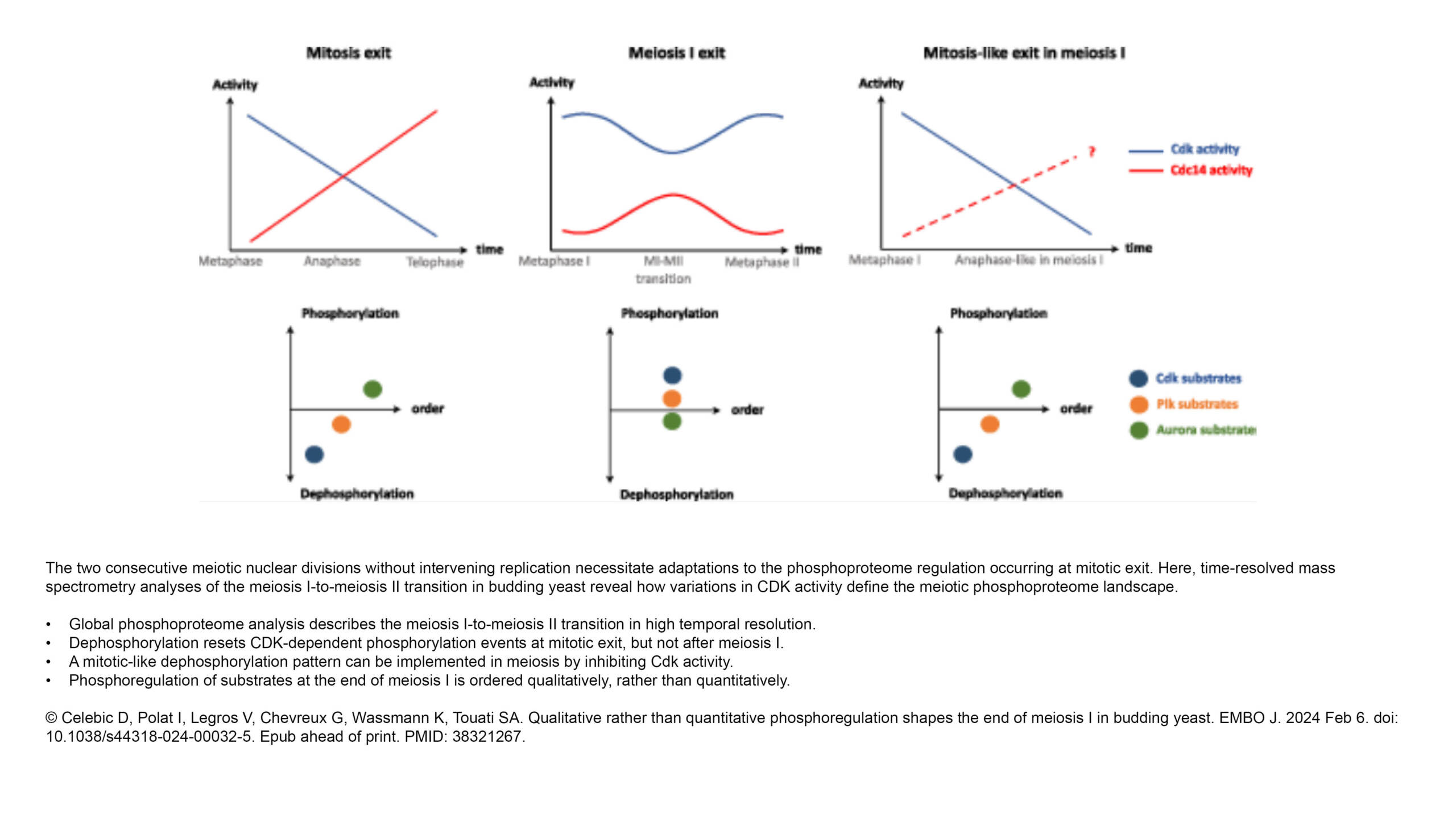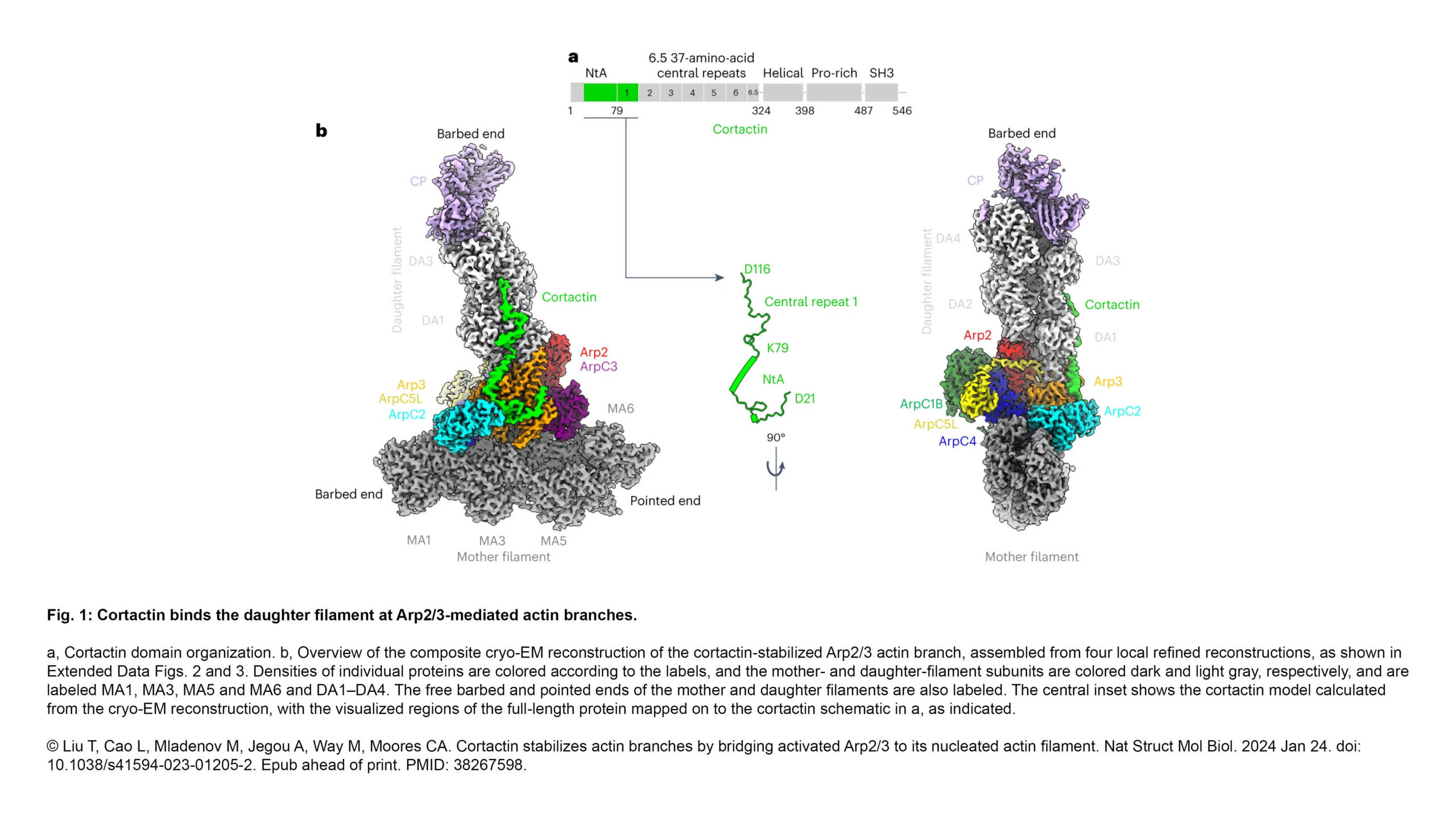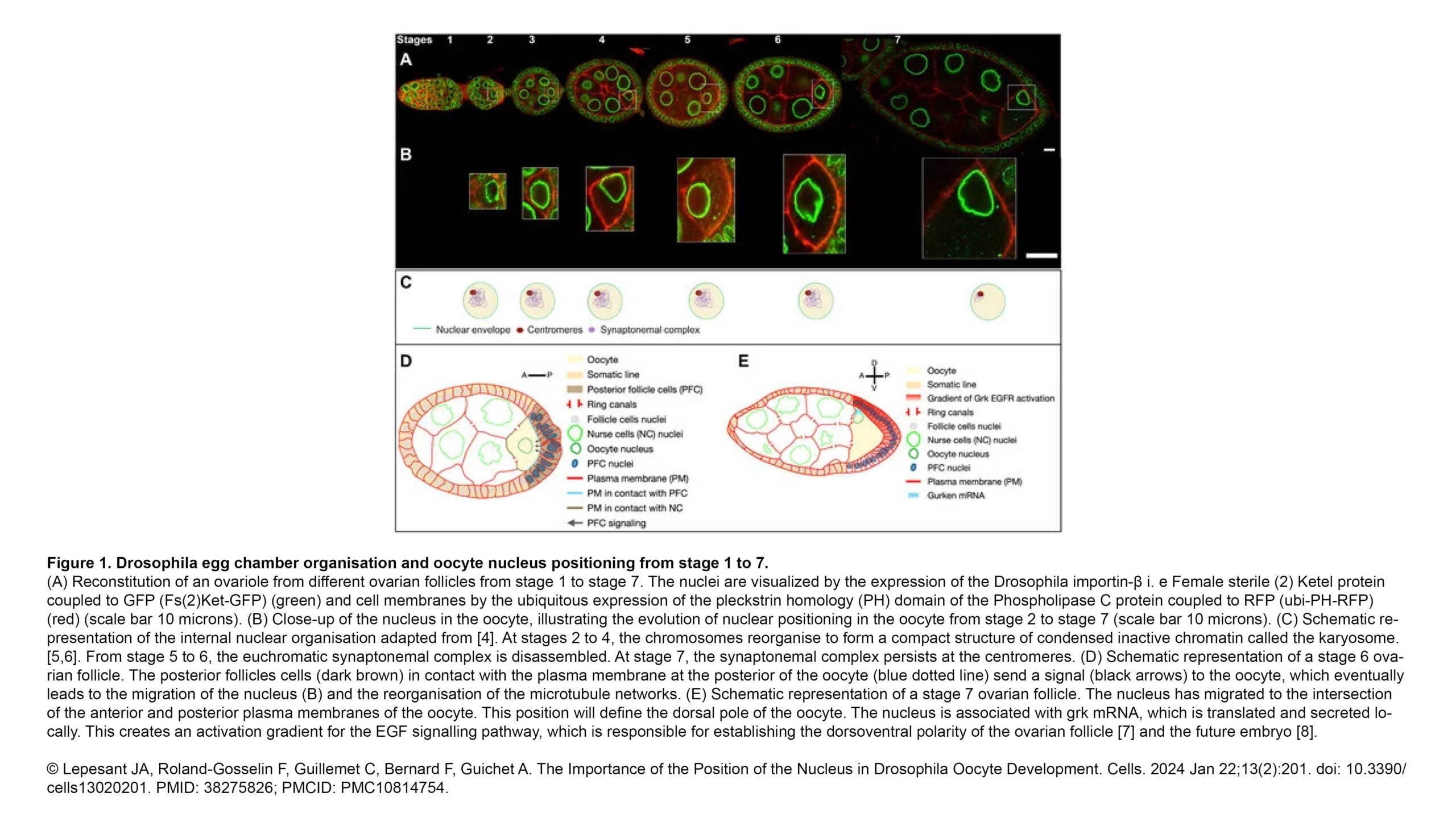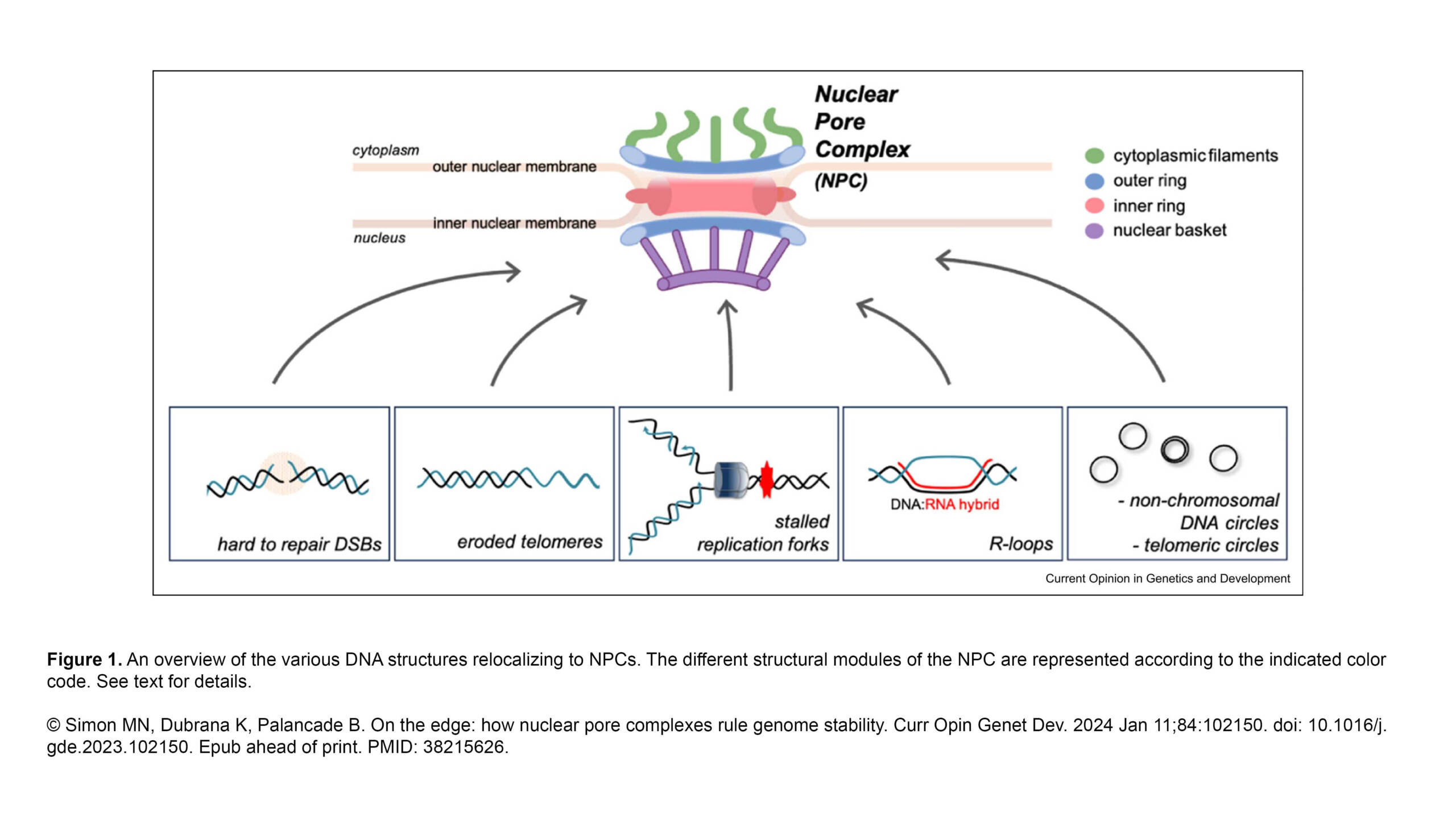L'équipe Jackson/Verbavatz a publié un nouvel article dans eLife :
The ER tether VAPA is required for proper cell motility and anchors ER-PM contact sites to focal adhesions
Résumé :
Cell motility processes highly depend on the membrane distribution of Phosphoinositides, giving rise to cytoskeleton reshaping and membrane trafficking events. Membrane contact sites serve as platforms for…
